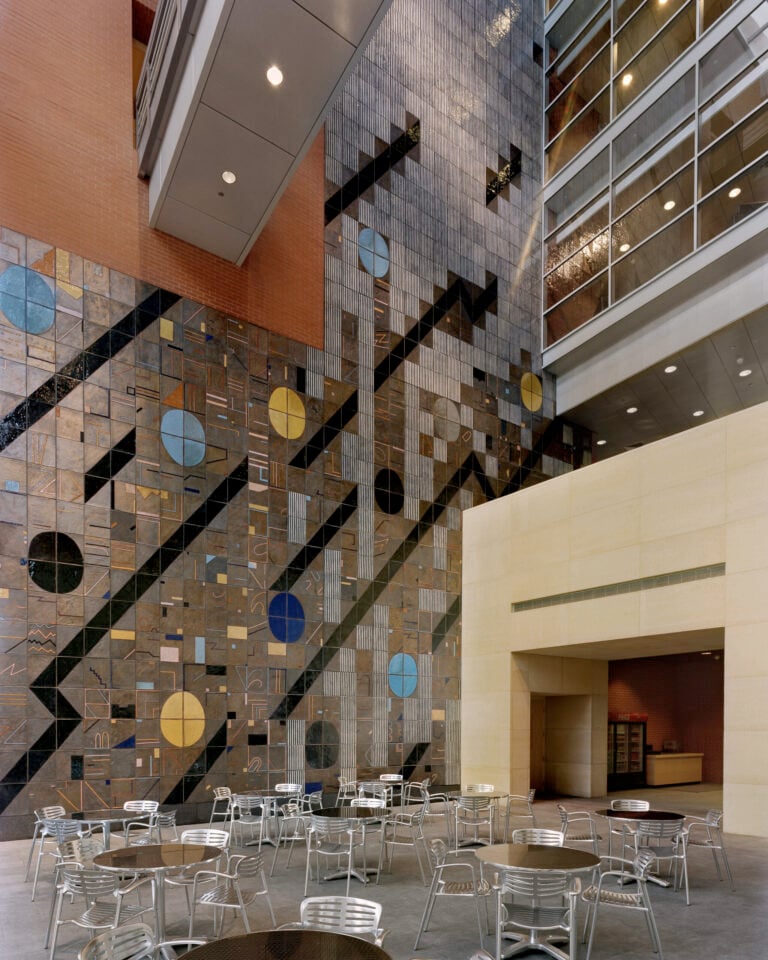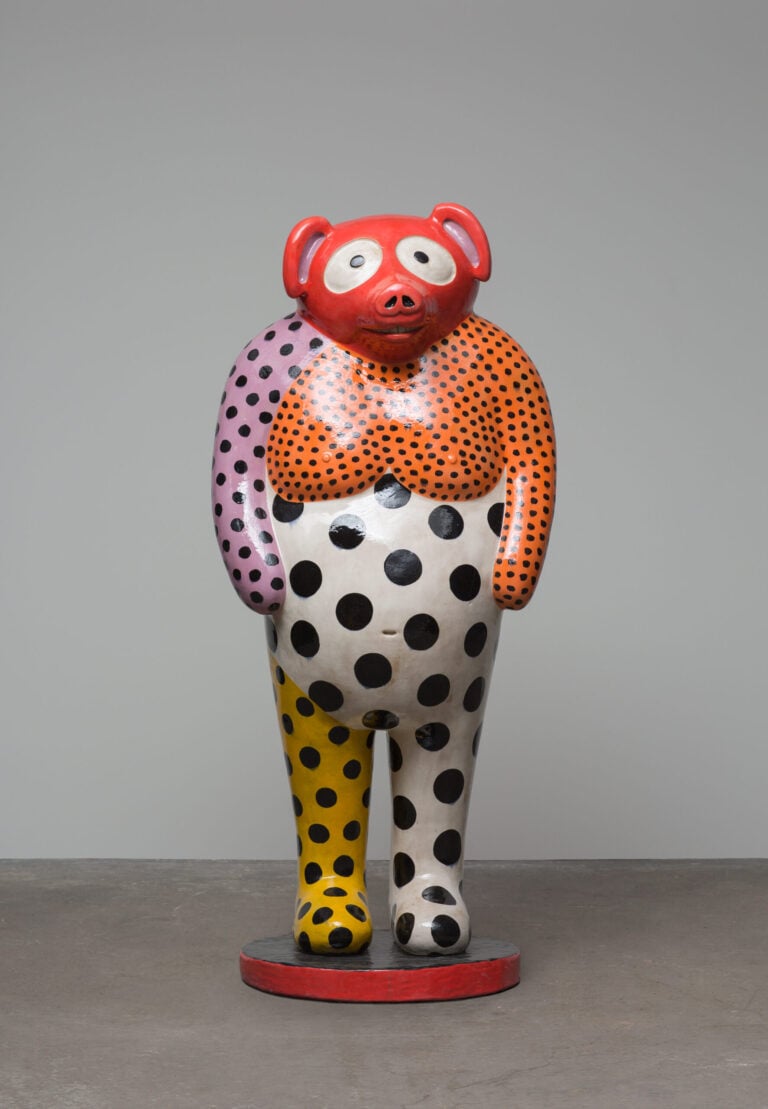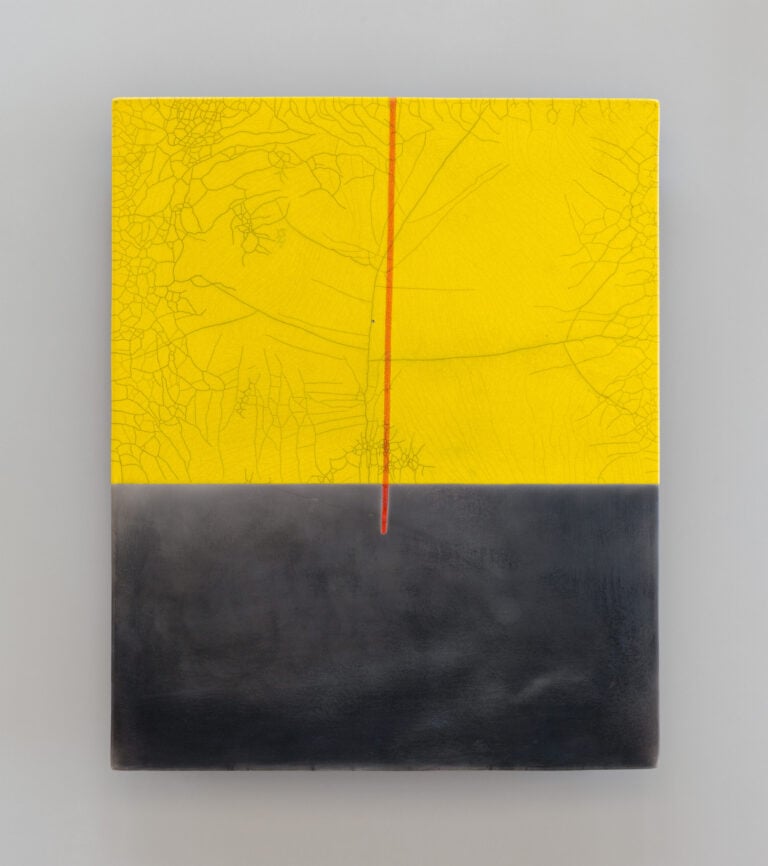
Dangos
Kaneko built his first Dangos, named after Japanese dumplings, in 1983 at an industrial kiln in Omaha, Nebraska, provided by the Bemis Center for Contemporary Arts. These hand-built monoliths were six feet tall and weighed five and a half tons upon completion. Since this first experiment with scale, Kaneko’s creativity and ingenuity have produced Dangos over thirteen feet in height. Yet for Kaneko, the scale of his Dangos is inherent to their form. He says, “Oftentimes I am asked why I make such large-scale work. In making any object, we cannot escape the problem of scale. I believe each form has one right scale. Whether I’m making a large or small object, in the end I hope it will make sense to have that particular scale and form together, and that it will give off enough energy to shake the air around it.” Kaneko’s Dangos have been recognized not only as the largest free-standing ceramic art pieces in the world, but as iconic masterpieces of contemporary art, represented in the collections of art museums and cultural institutions around the world.
Untitled, Dango
2016

Heads
Jun Kaneko first thought about experimenting with the human head as a sculptural form quite early in his career, but only began making them in 1993. He has long had an interest in the human figure as an abstract shape. Kaneko believes that seeing something familiar shrinks the distance between observer and object. He says, “There are lots of possibilities to the problem of abstract form and the head. To shrink the distance between viewer and object by using a realistic form or head interests me greatly. I started making heads as a pair, because it gives me the opportunity to create a different visual power. The space between the two in the pair is the important element.”
For Kaneko, his Heads present an entirely different challenge from the naturalistic shapes of his Dangos and simple geometry of his Slabs and Ovals, because their familiar form recalls a vast array of traditions, meanings, and associations. He therefore creates them as neutral forms, streamlined to their essential features, with closed eyes and mute expressions. The Heads have been noted for their air of weighty tranquility. Enigmatic yet accessible, Kaneko’s Heads are among the most celebrated works in his oeuvre.
Untitled, Head
2007

Densities & Constructions
Kaneko’s abstract sculptures known as Densities, Constructions, and Chunks evolved from his interest in a conscious exploration of spatial relationships. This is reflected in his architectural approach to physical placement among the elements of each piece, as well as his use of color, mark-making, and patterns. A primary concern for Kaneko, in these works, is how to create a structural rhythm and imbue the sculpture with as much power as possible, regardless of its scale.
Untitled, Construction
1998

Wall Slabs & Ovals
Jun Kaneko began creating his Slabs and Ovals in the mid-1980s, when he was teaching at Cranbrook Academy of Art, and over the decades he has produced scores of them. These simple ceramic forms provide a flat medium through which he explores the dynamic interplay between pattern and space, color and surface, and the complexity of formal composition. In this sense, the Slabs and Ovals provide an opportunity for spontaneity and experimentation more typically seen in two-dimensional art. Yet, though they draw a clear parallel to his works on canvas and paper, Kaneko’s Slabs and Ovals are more than a mere surface upon which to paint in glaze. As noted by art scholar Glen R. Brown in an essay about Kaneko’s work, “they are marvels of cultivation, of the artist’s restrained interaction with the material in order to encourage it to reveal aspects of its potential.”
Untitled, Oval
2011

Murals
Jun Kaneko’s first Wall resulted from his first public art commission in 1986, when he installed an array of colorfully patterned tiles in the Broadway Station of Detroit’s People Mover transit system. However it was not until a year later, during his residency at the celebrated Arabia ceramic workshop in Finland, that Kaneko’s enthusiasm for tilework fully emerged. The artist, working with new and unfamiliar Finnish materials, produced hundreds of hand made slabs to test various glaze formulas for color and texture. After weeks of tests, he laid all the slabs on the floor and was astonished to realize that the random arrangement of his test slabs was not only interesting, but that rearranging and moving them around created endlessly fascinating effects. This new creative insight became an obsession, and after many hours spent on the composition Kaneko created Arabia Wall, which became a prototype for his tilework process and aesthetic. Today his Walls are a highly regarded aspect of his public commissioned works, and have been installed in a variety of public venues and museums in the United States and abroad.
Shift, Mural
2002

Tanuki
Jun Kaneko’s Tanuki figures are his thoughtful and contemporary interpretation of the Japanese folklore characters. He was initially drawn to creating Tanuki sculptures while visiting Shigaraki, a town which has one of the oldest ceramic traditions in Japan. The Tanuki became the town mascot and an important symbol of their business.
Having traveled to the region several times to work with local ceramic institutions, Jun Kaneko drew inspiration from Shigaraki’s tanuki statues to create his own version of the beloved shapeshifter. His Tanukis stand over 6 feet tall, their forms covered with the artist’s vibrant colors and patterns. Kaneko’s whimsical humor shines through with these pieces, and each one is a unique celebration of a treasured Japanese icon.
Untitled, Tanuki
2014

Raku
Though traditional Japanese raku ware dates to the mid-sixteenth century, the Western contemporary use of the word “raku” is a loose appropriation of the term to refer to low-fired pottery. The American ceramist Paul Soldner, with whom Kaneko studied at the Claremont Graduate School (1969-1979), conceived an innovative raku technique in the 1960s. Soldner began adding combustible materials such as eucalyptus leaves, sawdust, and newspapers to the firing process, which resulted in a delightful transformation of the glaze and surface texture. Modern raku ceramicists continued experimenting, using a variety of techniques and materials to produce unpredictable and beautiful surfaces on ceramic ware and sculpture.
Jun Kaneko was among those experimenting with raku during his time with Soldner, but as he became increasingly focused on large scale ceramics, he found the small kilns used for raku limited the execution of his ideas. Kaneko therefore abandoned raku firing until 2012, when he gained access to a raku kiln in Cuernavaca, Mexico, that specializes in the firing of large scale vessels. This Cuernavaca kiln, operated by ceramicist Juan de Dios Sanchez, enabled Kaneko to create his signature Heads, Slabs, and Tanuki with the smoky blacks, crackled glazes, and lustrous metallics characteristic of raku firing.
Untitled, Wall Slab
2023